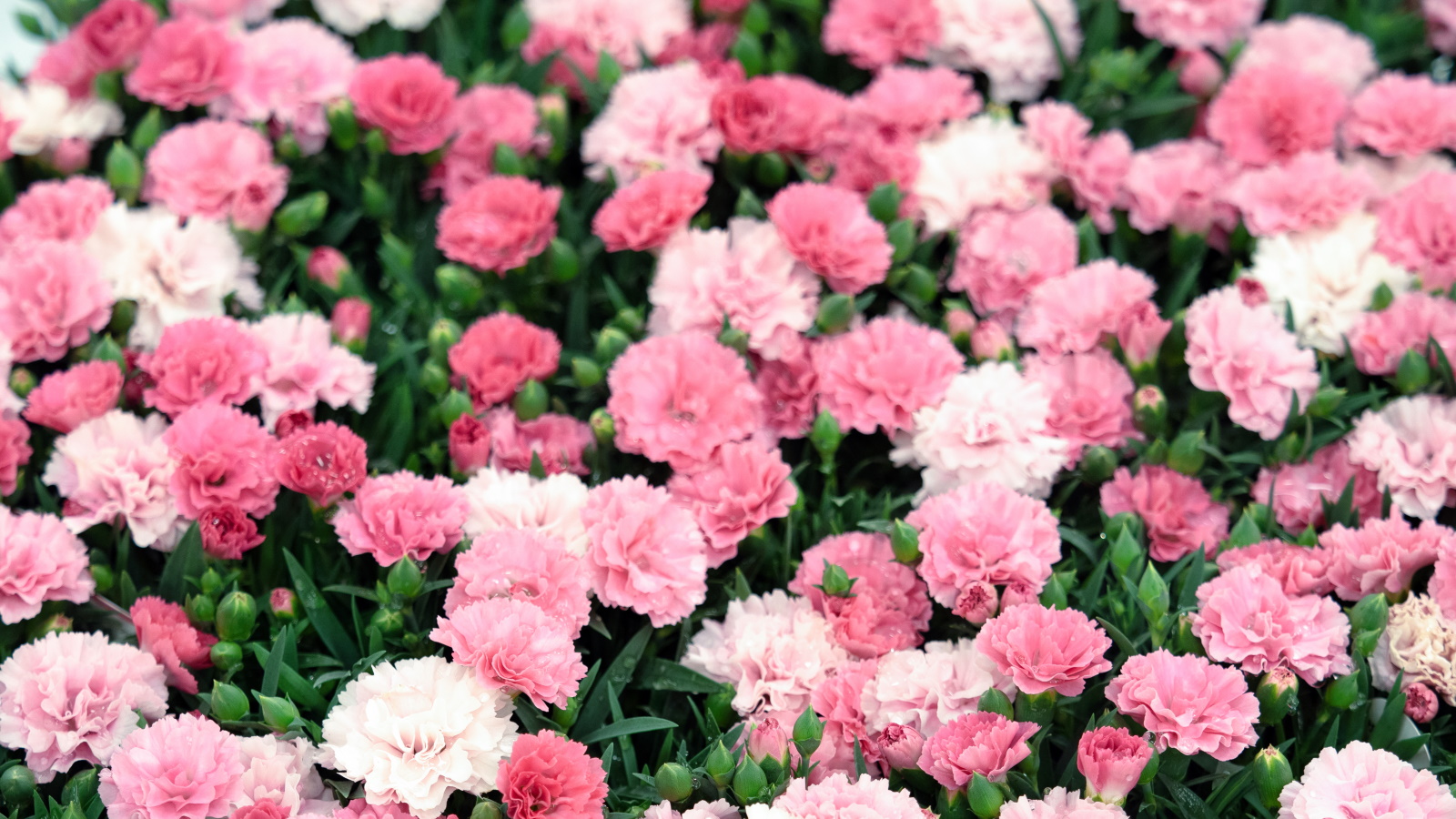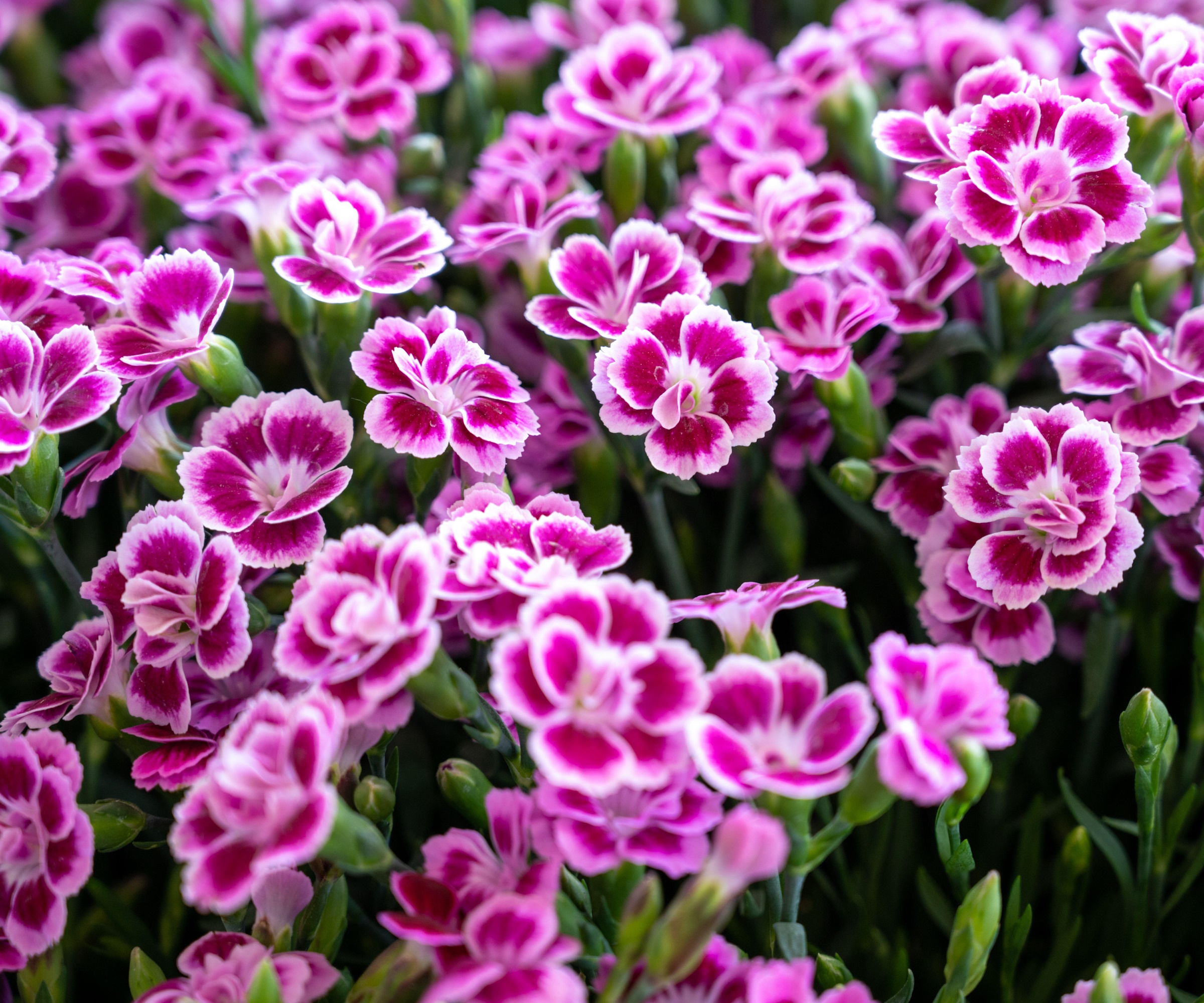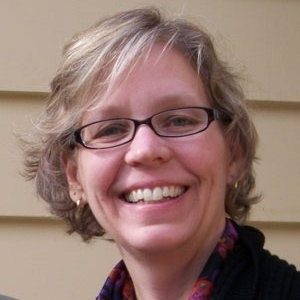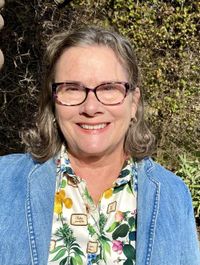Looking for a colorful cottage garden plant that pollinators adore? Dianthus flowers are a surefire summer hit
This reliable and long-lasting perennial will fill your borders with dramatic color


Dianthus, or pinks, are the perfect plants for a summer border. If you are looking for brightly colored and scented blooms, dianthus are sure to impress. These long-flowering and low-maintenance plants are ideal for any backyard, helping to add floral color at the front of borders, lining paths, or brightening up your container displays.
Dianthus, also referred to as carnations, are a large family of plants made up of over 300 different species. They can be found in all different shapes, sizes and colors, from long-stemmed yellow blooms to low-growing full sun ground cover plants. While working as a gardener in the Chianti region of Tuscany a few years ago, I grew Dianthus 'Devon Cream' amongst sharp topiary structures. This peach-tinted variety glistened in the Italian sunshine.
These popular and versatile plants are relatively easy to grow and can work in large and small spaces alike. By following a few simple steps, such as learning how to deadhead dianthus, you can ensure that your plot is filled with fragrant flowers for much of spring and summer. Here, two gardening experts share their top tips for growing dianthus.

How to grow dianthus
Dianthus plants can be biennials, perennials or evergreens. Whatever species or variety you choose to grow, and there are many to pick from, dianthus plants will be sure to steal the show when in bloom with their brilliant color and fragrance. What's more, dianthus are popular plants for pollinators, known to attract birds, butterflies and bees during the growing season.
Things to know about dianthus

'Dianthus are versatile plants and can be grown in US hardiness zone 5 to US hardiness zone 9,' says Gail Pabst, gardening expert and Marketing Director for the National Garden Bureau.
'They are heavy bloomers and tend to have strong stems, making them useful for those gardeners planning a cut flower garden, providing you with armloads of colorful blooms that are effective in a vase,' Gail adds.
There are many spectacular varieties to choose from, but Gail recommends the ColorPop collection, for their 'bold blooms complemented by silver foliage.' Once established, these plants are 'low-maintenance and tough, thriving in the scorching summer months.'
Design expertise in your inbox – from inspiring decorating ideas and beautiful celebrity homes to practical gardening advice and shopping round-ups.
For a colorful and fragrant variety, why not try a dianthus variety from the Constant Beauty collection, available from Walmart, with flowers that smell just as good as they look?

Gail is a passionate horticulturist with over 25 years' experience in the industry. She is an avid home gardener too and loves to try out the newest varieties and techniques. Gail is the Marketing Director for the National Garden Bureau and her work has helped her to continue their mission of inspiring, teaching and growing in gardening with others.
Growing advice for dianthus

- Soil: 'Dianthus plants thrive in well-drained, slightly alkaline soil,' says Susan Betz, herb expert and Honorary Master Gardener. They are generally versatile and resilient plants and so will tolerate most soils, but - as Susan says - they tend to grow best with a soil pH above 7.0. If you are unsure about the pH of your soil, consider using a soil tester kit, available from Walmart. 'These plants grow well in rocky areas,' Susan adds, so if you are seeking rock garden ideas, dianthus should be a consideration.
- Light: 'These pretty plants do best with full sun exposure,' Susan adds, 'so finding a position in your yard with at least 6 to 8 hours of direct sun is important.' While they will tolerate part-sun-part-shade, as Susan says, a bright, sunny spot in your borders will generate the best results.
- Watering: Dianthus are generally drought-tolerant plants and can survive dry spells during the spring and summer. However, for any young plants recently added to your yard, I recommend regular watering to ensure they can establish roots. From the second year, they should be self-reliant.
- Fertilizing: This plant does not require fertilizing, and can usually find what it needs in the soil without added nutrients.
- Deadheading: Deadheading, the process of removing spent flowers, is an important job when caring for dianthus plants. Once the blooms begin to brown, you can remove spent flowerheads to encourage more blooms. Using clean, sharp pruning snips, such as these Felco pruners, available from Walmart, carefully cut stems just above a leaf node.

Susan Betz is an author, garden communicator, lecturer, and conservationist specializing in herbs and native plants. She has been actively growing and using herbs to educate the public about gardening and the natural world for over 35 years. She is an Honorary Master Gardener and a member of the International Herb Association, Garden Communicators, the Ecological Landscape Alliance, and the National Garden Bureau. Susan is a life member of the Herb Society of America.
FAQs
Can I grow dianthus in pots?
Yes, dianthus plants can be grown in pots. While they will tolerate dry conditions, be mindful that any pot plants can dry out much quicker than those grown in the ground. For this reason, be sure to water and feed your pots during spring and summer when the temperatures rise.
Dianthus plants are sure to add interest and impact to your borders and, with the right care, these blooms will last long into the summer months. For more plant inspiration, see our guide on how to grow nicotiana, otherwise known as the flowering tobacco, for unusual and striking flowers to add to your dianthus collection this year.

Thomas is a Content Editor within the Gardens Team at Homes and Gardens. He has worked as a professional gardener for both public spaces and private estates, specializing in productive gardening, growing food and flowers. Trained in Horticulture at the Garden Museum, he has written on gardening and garden history for various publications, including The English Garden, Gardens Illustrated, Hortus, The London Gardener and Bloom. He has co-authored a Lonely Planet travel book, The Tree Atlas, due out in 2024.
